The windows File system iDataAgent will automatically be upgraded when you upgrade this Agent. For information specific to Windows File system iDataAgent, see Upgrade the Windows File System iDataAgent - Clustered Environment.
If multiple components are installed on a computer, then ensure that all applicable components are selected for upgrade. In such a situation, the upgrade sequence may vary. Refer to the appropriate procedures for upgrade requirements and steps specific to the component.
Verify that the computer in which you wish to upgrade the software satisfies the minimum requirements specified in System Requirements - Quick Recovery Agent.
If you are upgrading the software from 7.0.0 to 8.0.0
- The upgrade can be initiated from any one of the physical nodes.
When a physical node is upgraded, all the virtual installations
associated with that instance are automatically upgraded. (Virtual
nodes need not be upgraded separately.)
When the software is upgraded on a physical node, the upgrade program facilitates the upgrade of the remaining physical nodes in the cluster by displaying a list of all the available physical nodes. You can select the appropriate nodes in which the software must be upgraded.
If you are upgrading the software from 6.1.0 to 8.0.0
- Upgrade the physical nodes prior to upgrading the virtual server. Similarly upgrade the active node first before upgrading the passive nodes.
- The upgrade must be initiated on the active node. It is recommended that both the active and passive nodes are available during the upgrade process. The program provides the option to automatically upgrade the passive nodes. If necessary, you can also manually upgrade the passive nodes if they are not available. (See Manually Upgrading the Software on a Passive Node for step-by-step instructions.)
- Agent upgrades must be performed in the following order:
- Windows File System iDataAgent must be first upgraded on all the physical nodes in the cluster prior to attempting any virtual server upgrades.
- Other Agents can then be upgraded on the virtual server.
Supported Upgrade Paths
The following table provides a list of supported upgrade paths for the current software version. If the version currently installed on your computer is not listed here, contact your software provider for more information.
Installed Version |
Upgrade to Version 8.0.0 |
Information |
| 6.1.0 | Supported | Perform a direct upgrade to Version 8.0.0. |
| 7.0.0 | Supported | Perform a direct upgrade to Version 8.0.0. |
Upgrade Requirements
General
- Review the Upgrade Strategy before upgrading the software.
- Verify that no jobs are in progress or scheduled to occur while the
software is being upgraded on the client. If jobs are scheduled, either
perform the upgrade at another time or disable all jobs in the client using
the Activity Control tab from the Client Computer Properties
dialog box in the CommCell Console.
Once the upgrade is completed, you can enable the jobs from this dialog box.
- Verify that the CommServe computer is accessible and all services on the CommServe and the MediaAgent in which you wish to perform the upgrade are running.
- Verify that the SQL Server instance used by the CommServe is running on the CommServe computer.
- Verify that all applications (CommCell Console, Service Control Manager) are closed.
- Close all applications and disable any programs that run automatically, including antivirus, screen savers and system utilities. Some programs, including antivirus software, may be running as a service. Stop and disable all non-essential services before you begin. You can re-enable them after the upgrade.
- The files and folders associated with CommCell components should not be opened by other applications (for example, Windows Explorer, FTP, etc.) on this computer or from other computers during the upgrade.
- Verify that you have the
software
installation disc that is appropriate to the destination computerís
operating system.
Make sure that you have the latest software installation disc before you start to install the software. If you are not sure, contact your software provider.
| This agent must be upgraded to the current version as soon as the CommServe is upgraded. |
| If you encounter an error deleting the old install folder during the upgrade process, try killing the GxSwapFile.exe process and running setup again. The upgrade should resume and continue normally. |
Before You Begin
- Ensure that you are logged on as the Domain User with administrative privileges to all nodes in the cluster.
Upgrade Procedure
Upgrade the Virtual Node
NOTES
- This screen will only appear when the bAllow32BitInstallOn64Bit registry key has been created and enabled on this computer.
NOTES
- The options that appear on this screen depend on the computer in which the software is being installed.
Click Next to continue, if no other applications are running.

Click OK to continue, if virus scanning software is disabled.

Click Next to continue.

NOTES
- This window is only displayed when the Require Authentication for Agent Installation option is selected in the CommCell Properties. Users must belong to a User Group with Administrative Management capabilities to enable this feature. For more information, see Authentication for Agent Installs.
Click Next to continue.
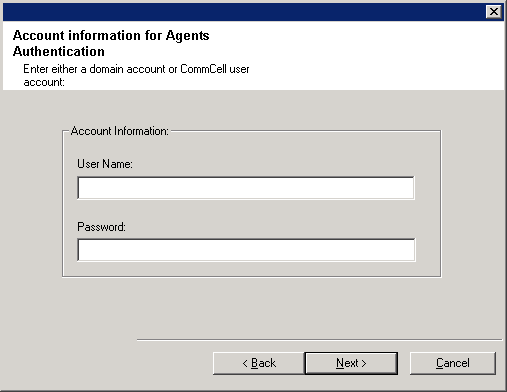
Click Next to continue.
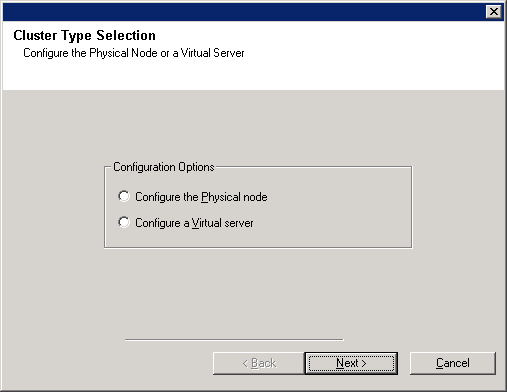
Click Next to continue.
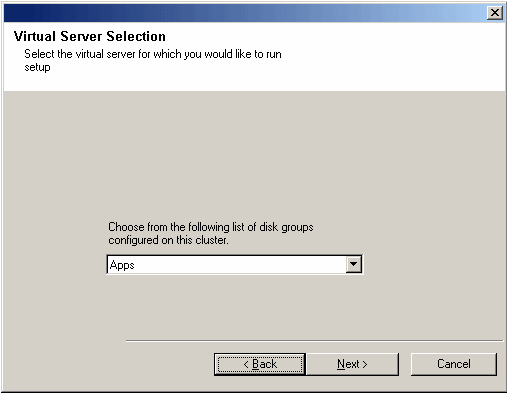
NOTES
- New components from this version can only be installed after upgrading the existing components.
- The older version number depends on the version in the computer and may look different from the example shown.
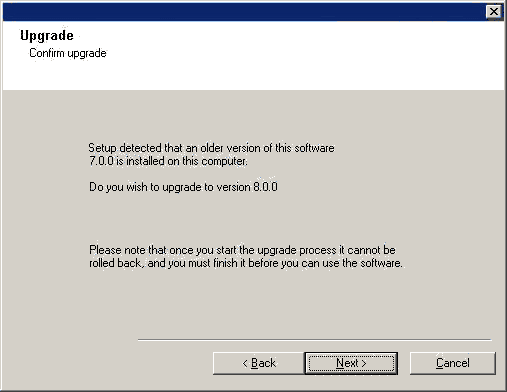
NOTES
- The upgrade process deletes and replaces this folder with newer files.
To preserve files or folders within the <software installation path> folder, move them to another location before clicking Yes.
- Clicking No will exit the upgrade program.
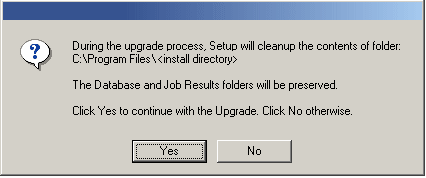
NOTES
- Internet connectivity is required to download updates.
- This step is applicable when installing on the first instance.
- Updates are downloaded to the following directory:
<software installation>/Base/Temp/DownloadedPacks.
They are launched silently and installed automatically for the first instance.
Click Next to continue.
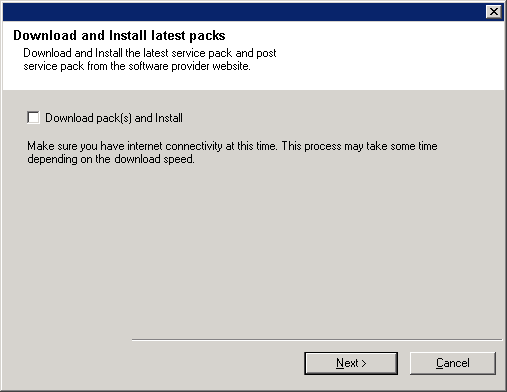
NOTES
- The Summary on your screen will reflect the components installed on the computer, and may look different from the example shown.
The upgrade program now starts the upgrade process. This step may take several minutes to complete.


To complete the install for this node only, click No.

NOTES
- The list of Preferred Nodes displays all the nodes found in the cluster; from this list you should only select cluster nodes configured to host this virtual server.
- Do not select nodes that already have multiple instances installed. For more information, see Multi Instancing.
When you have completed your selections, click Next to continue.
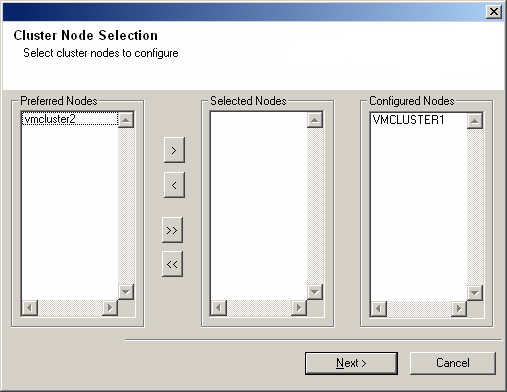
Click Next to continue.
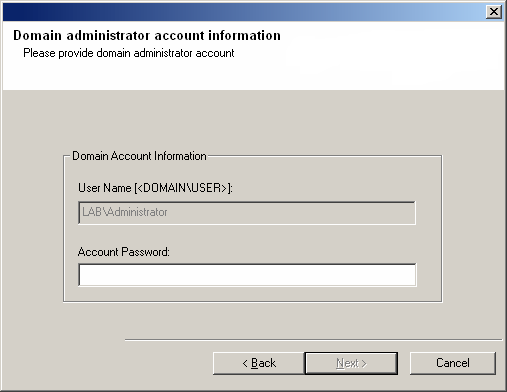
Click Stop to prevent upgrade to any nodes after the current ones complete.
Click Advanced Settings to specify any of the following:
- Maximum number of nodes on which Setup can run simultaneously.
- Time allocated for Setup to begin executing on each node, after which the upgrade attempt will fail.
- Time allocated for Setup to complete on each node, after which the upgrade attempt will fail.
NOTES
- If, during the remote upgrade of a cluster node, setup fails to complete or is interrupted, you must perform a local upgrade on that node. When you do, the upgrade begins from where it left off, or from the beginning if necessary. For procedures, see Manually Upgrading the Software on a Passive Node.
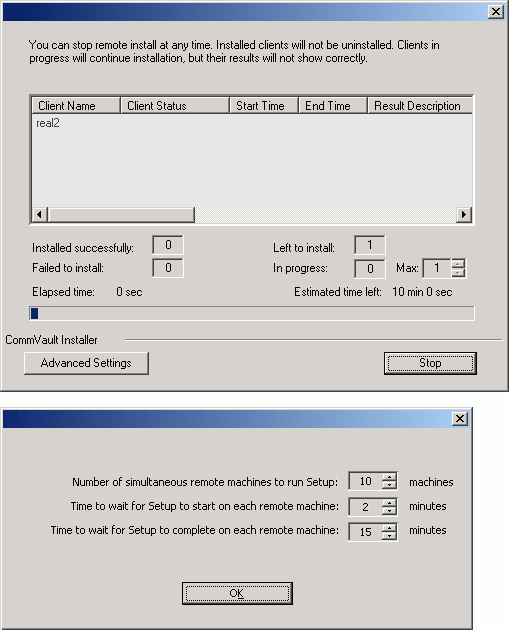
- Click Yes to reboot now.
- Click No to continue with the upgrade and reboot later.
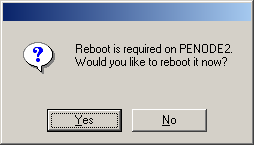
NOTES
- If the passive node upgrade fails, you must manually upgrade the passive node once the active node upgrade is complete. (See Manually Upgrading the Software on a Passive Node for step-by-step instructions.)
- The Result message displayed on your screen will reflect the status of the passive node upgrade, and may look different from the example.
Click Next to continue.
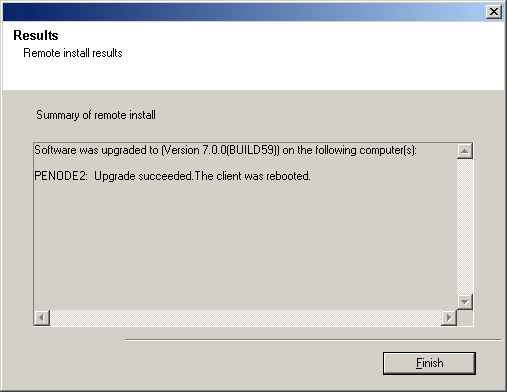
NOTES
- The Completion Report will reflect the components upgraded on the computer, and may look different from the example shown.
The upgrade is now complete.
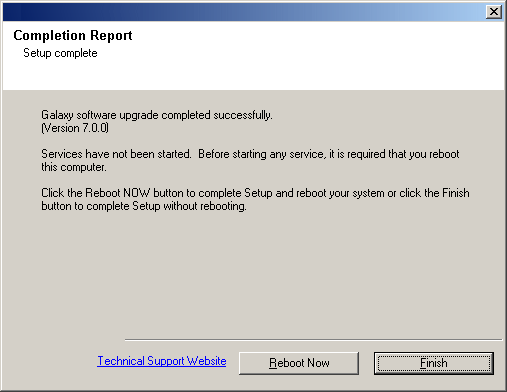
Post-Upgrade Considerations
General
- Install post-release updates or Service Packs that may have been released after the release of the software. If you are installing a Service Pack, verify and ensure that it is the same version as the one installed in the CommServe Server. Alternatively, you can enable Automatic Updates for quick and easy installation of updates in the CommCell component.
- If Activity Control was disabled on the client prior to the upgrade, enable it after the upgrade using the Activity Control tab from the Client Computer Properties dialog box in the CommCell Console.
Agent Specific
- It is strongly recommended that you run a Full QR Volume Creation job after the upgrade. The QR Agent software will NOT automatically convert the next incremental update to a Full QR Volume creation job.
- If you had manually changed any of these settings in the previous release,
they will not be preserved in the upgrade:
- COW Cache size (Minimum and Maximum)
- COW Cache location
- The required CVD resource dependencies set on the virtual node of the cluster will not be preserved in the upgrade.Only the disk resource that contains the partition on which the agent was installed will be set as a dependency for the CVD resource. Add any other disk resources that contain partitions you intend to protect as dependencies for the CVD resource on the virtual server. For example, the agent was install on the R: drive of the virtual server. You use the agent to protect the R: and S: drives. You must add the S: drive as a dependency to the CVD resource. This required for the disk resources to fail over properly.
-
If you are using the QSnap snapshot enabler with this Agent, see The Block Filter Driver and Bitmaps on the Overview - QSnap page for important information about how the QSnap block filter operates.
-
After upgrading the clients, all the file servers configured in the earlier releases must be detected again in the upgraded setup, to activate the SnapMirror license on the upgraded clients. See Configure NDMP Properties, for step-by-step instructions on detecting a file server.